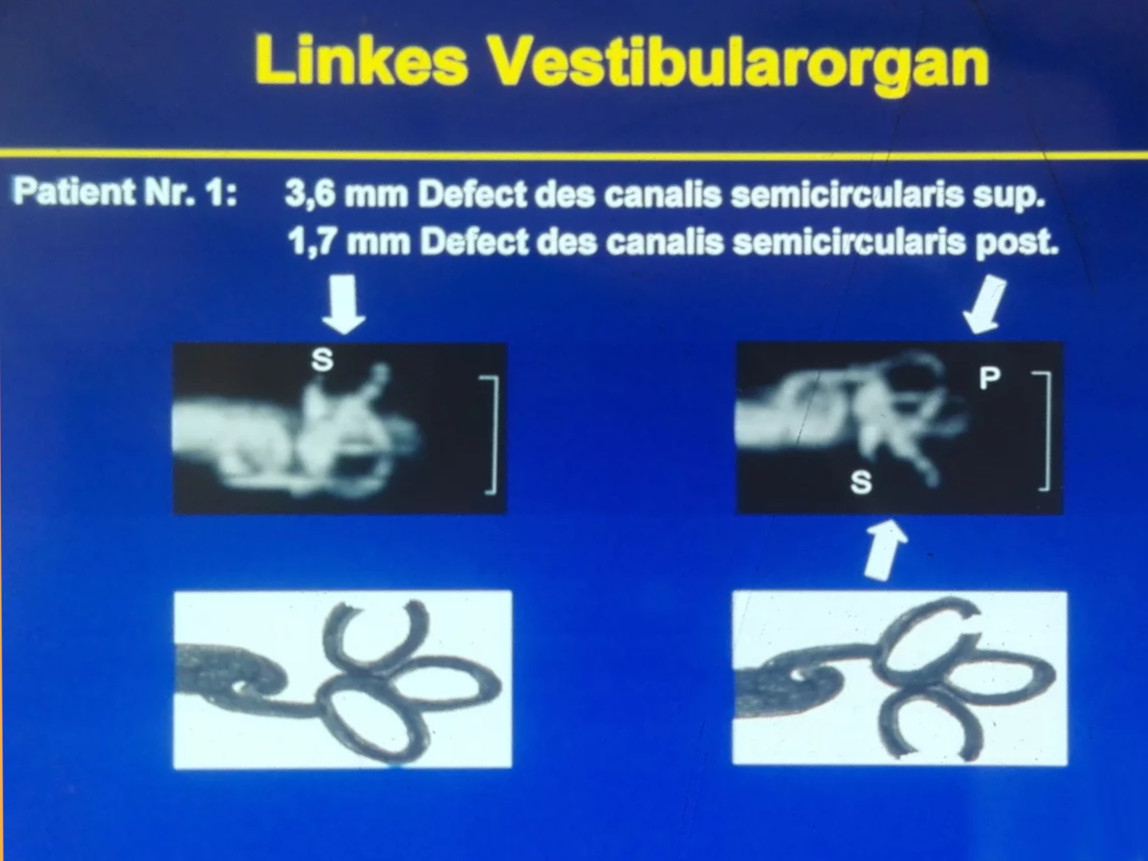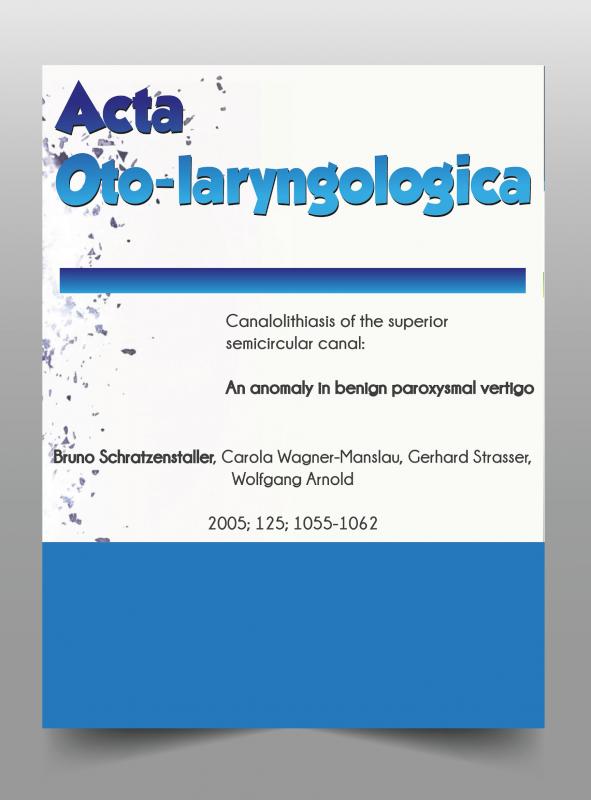Paroxysmaler Lagerungsschwindel des oberen Bogengangs: Eine Anomalie
An der Existenz eines Lagerungsschwindel des oberen Bogenganges wurde lange gezweifelt, da dieser sowohl im Liegen als auch im Stehen der oberste Ort im Innenohr ist und sich die auslösenden Kristalle wegen der Schwerkraft dort nicht sammeln können.
Dr. Schratzenstaller gelang als Erstem an drei Patienten der Nachweis, daß diese sehr seltene Erkrankung tatsächlich existiert. Dies konnte er mittels dreidimensionaler Kernspintomographie untermauern. Diese Ergebnisse wurden auf Englisch in den auf europäischer Ebene hoch angesehenen Acta Otolaryngologica veröffentlicht.
Dia 2: Patient mit kleinem Füllungsdefekt im hinteren Bogengang (p) und großem Füllungsdefekt im oberen Bogengang (s)

Titel
Canalolithiasis of the superior semicircular canal: An anomaly in benign paroxysmal vertigo
Autoren
Schratzenstaller, Bruno & Wagner-Manslau, Carola & Strasser, Gerhard & Arnold, Wolfgang. (2005)
Abstrakt
According to the canalolithiasis theory, benign paroxysmal vertigo (BPPV) is caused by gravity-dependent movements of otoconial debris that collects in the endolymph of the posterior semicircular canal. Other parts of the vestibular organ are rarely affected, and it is mainly the horizontal canal that is affected by this atypical form of BPPV. Canalolithiasis of the superior semicircular canal must be considered an anomaly because the superior semicircular canal is the highest point of the vestibular organ and debris normally cannot collect in this special location. Until now, BPPV of the superior canal has mainly been dealt with theoretically in the literature. The authors present three patients with canalolithiasis of the superior semicircular canal and offer direct proof of the condition using high-resolution 3D MRI.

